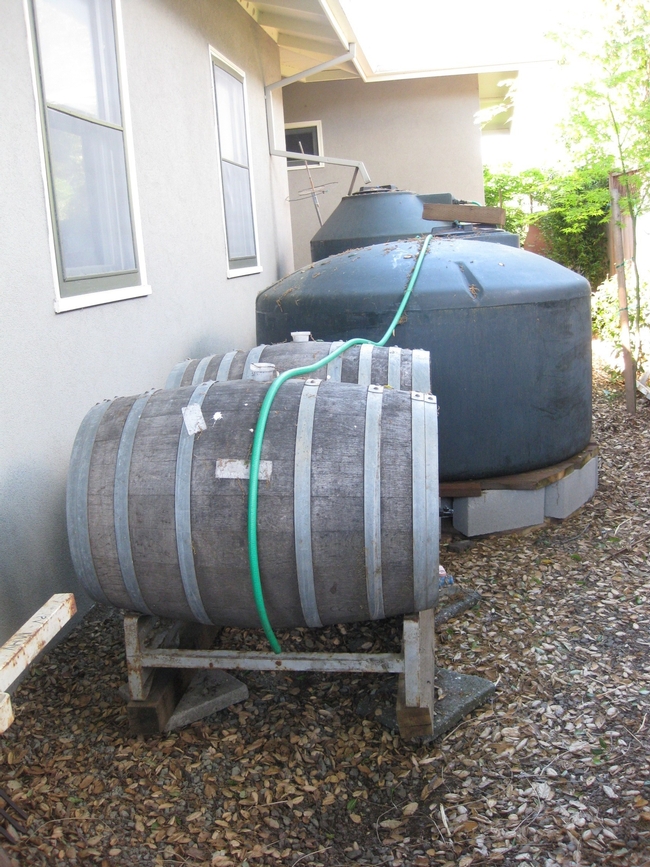The Watershed Awareness Calendar for 2014 is back from the printer. Drop by the Napa County Resource Conservation District and pick one up. (Call the NRCD at 707-252-4188 for address and hours.)This year’s calendar includes information and ideas on how to manage and conserve storm-water runoff on your home property or business.
This month-by-month guide strives to help Napa County residents keep watersheds and waterways healthy. A watershed is an area of land with a common water course. In other words, all the water the land receives drains to the same place. Napa is blessed with three watersheds: the Napa River, Putah Creek and Suisun Creek.
Even if you live in town, you live within a watershed.
Watersheds collect water from rain and snow melt, absorbing it into the soil to replenish the water table. Runoff finds its way into storm drains, creeks, rivers and eventually to the bay and ocean.
These informative calendars are provided by the Napa County Resource Conservation District, The Watershed Information Center and Conservancy of Napa County and Friends of the River. All of these organizations are focused on protecting our natural resources and watersheds.
The calendar’s back cover offers a directory of local resources, including the Native Plant Society, The Land Trust, Carolyn Parr Nature Museum and the U.C. Cooperative Extension Master Gardeners. The list includes e-mail addresses, websites and phone numbers.
The document also provides contact information for other organizations with resources to help businesses, homeowners and property owners replace thirsty lawns with more water-efficient landscaping or install other water-conserving or storm water-diverting systems.
If harvesting rainwater to irrigate your garden and reduce your water bill sounds good to you, consider the rebate plan offered by the Napa County Flood Control and Water Conservation District. This plan provides a rebate for installing rain barrels and cisterns and even reimburses some residents for designing and installing a rain garden.
Each month of the calendar highlights a different technique to help gardeners and property owners slow, spread and sink fast-moving storm water. These techniques can be used singly or in combination on your property.
One impressive and inspiring project is part of the sustainability plan at New Technology High School in Napa. New Tech’s landscaping is drought resistant but still needs some water to thrive, so a 20,000-gallon cistern was installed to collect rainwater. This effort has reduced the amount of potable water used for landscaping by 63 percent.
Capturing 20,000 gallons may sound daunting, but Napa normally gets 20 to 60 inches of rainfall a year, providing plenty of opportunity for harvesting. One inch of rain on a 1500-square-foot roof generates close to 1,000 gallons of runoff. In one winter, your roof alone could shed 20,000 to 60,000 gallons of water.
Sometimes the goal is not to capture water but to slow its race over hard surfaces to storm drains or creeks. Often, this fast-moving water dissolves and transports pollutants along the way.
As you drive by Oxbow Public Market in Napa, you can’t see the bio-retention basins under the raised beds. But they are there, carefully designed to hold and slowly release water into storm drains. Oxbow’s downspouts drain into the basin where the water is filtered before being released into storm drains. One rain chain leads the gutter water to a trench drain, watering a row of grass plantings, which also slows and filters the water before it enters storm drains.
The Yountville Community Center also showcases several best-management practices for storm-water runoff. Drain inlets along the side of the building are equipped with filters to keep debris from clogging pipes as runoff from the roof collects in a basin behind the parking lot. Landscaping takes advantage of swales, basins, drains and drought-resistant plants to maximize beauty while managing the large amount of runoff from the building roofs.
These are big projects, obviously, but even small projects can be effective. In this helpful calendar, you’ll read about permeable paving, swales and rolling dips. The many suggestions and photos will open your eyes to possibilities as you view sustainable residential developments and sustainably managed vineyards and hillsides. Even property owners with small gardens and yards can make changes that have a positive impact on our watersheds.
Napa County Master Gardeners welcome the public to visit their demonstration garden at Connolly Ranch on Thursday mornings, from 10:30 a.m. until noon, except the last Thursday of the month. Connolly Ranch is at 3141 Browns Valley Road at Thompson Avenue in Napa. Enter on Thompson Avenue.
Master Gardeners are volunteers who help the University of California reach the gardening public with home gardening information. Napa County Master Gardeners ( http://ucanr.org/ucmgnapa/) are available to answer gardening questions in person or by phone, Monday, Wednesday and Friday, 9 a.m. to Noon, at the U. C. Cooperative Extension office, 1710 Soscol Avenue, Suite 4, Napa, 707-253-4143, or from outside City of Napa toll-free at 877-279-3065. Or e-mail your garden questions by following the guidelines on our web site. Click on Napa, then on Have Garden Questions? Find us on Facebook under UC Master Gardeners of Napa County.
